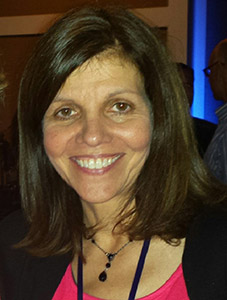Dynamic Seating: Looking Back and Ahead
Michelle L. Lange, OTR/L, ABDA, ATP/SMS
 Jessica Presperin Pedersen, MBA, OTR/L, ATP/SMS is an amazing occupational therapist in the Chicago area who has vast seating and wheeled mobility experience. I have personally known Jessica for many years and respect her so much as a friend and colleague. She graciously accepted my request to interview her about Dynamic Seating.
Jessica Presperin Pedersen, MBA, OTR/L, ATP/SMS is an amazing occupational therapist in the Chicago area who has vast seating and wheeled mobility experience. I have personally known Jessica for many years and respect her so much as a friend and colleague. She graciously accepted my request to interview her about Dynamic Seating.
Jessica, how long have you been using Dynamic Seating in your own practice?
Jessica has been using Dynamic Seating strategies since the early 1980s – a true pioneer! At that time, there weren’t yet formal Dynamic Seating solutions. So, like a good clinician, she made do with what she had. She and her team often used manual elevating legrests, removing the locking pin so that the client could extend at the knee. Without the ratcheting mechanism, the legrest would then free fall back into a starting position, providing dynamic movement. In those days, many clinics made their own wheelchair seating systems out of materials such as plywood, foam, and vinyl upholstery. The team added additional foam to the backs in an attempt to dampen forces. Much of this work occurred in residential facilities.
What made you first seek out this intervention?
Jessica noted damage to the wheelchair frame as well as individuals experiencing skin breakdown and pain from constant movement. Specifically, clients were experiencing skin breakdown and pressure at the occiput from rubbing or banging at the head and skin breakdown around the ankles as a result of clients extending against rigid straps over the feet. Dealing with extensor thrust and back extension required a means to diffuse force to protect the wheelchair from damage and the client from injury.
“As soon as hardware was available, we starting using it” which at first included Dynamic Seating products from Miller’s Adaptive Technology and the Kids Rock wheelchair. She also began using stretchable foot supports, such as Bodypoint Ankle Huggers, to reduce pressure at the feet.
What do you think is the biggest barrier to people accessing this technology?
“Funding, even with appeals.” While she believes there is a general knowledge and understanding of this technology, she also believes that many suppliers in her area resist providing Dynamic Seating because their reimbursement for this technology is not high enough to cover their costs. It is critical that we all continue to advocate for the best interventions for our clients including working with funding sources to provide approvals, as well as appropriate reimbursement.
What improvements are needed in Dynamic Seating?
Jessica believes we have good Dynamic Seating options at this point. She does have a few ideas however – decreasing weight, particularly for self-propellers without compromising durability. Jessica has had strong success with the Tarta back which does provide a lightweight solution, however this is not designed for clients with significant forces and who need significant postural support.
Keep up the great work, Jessica and thanks for all you do!
